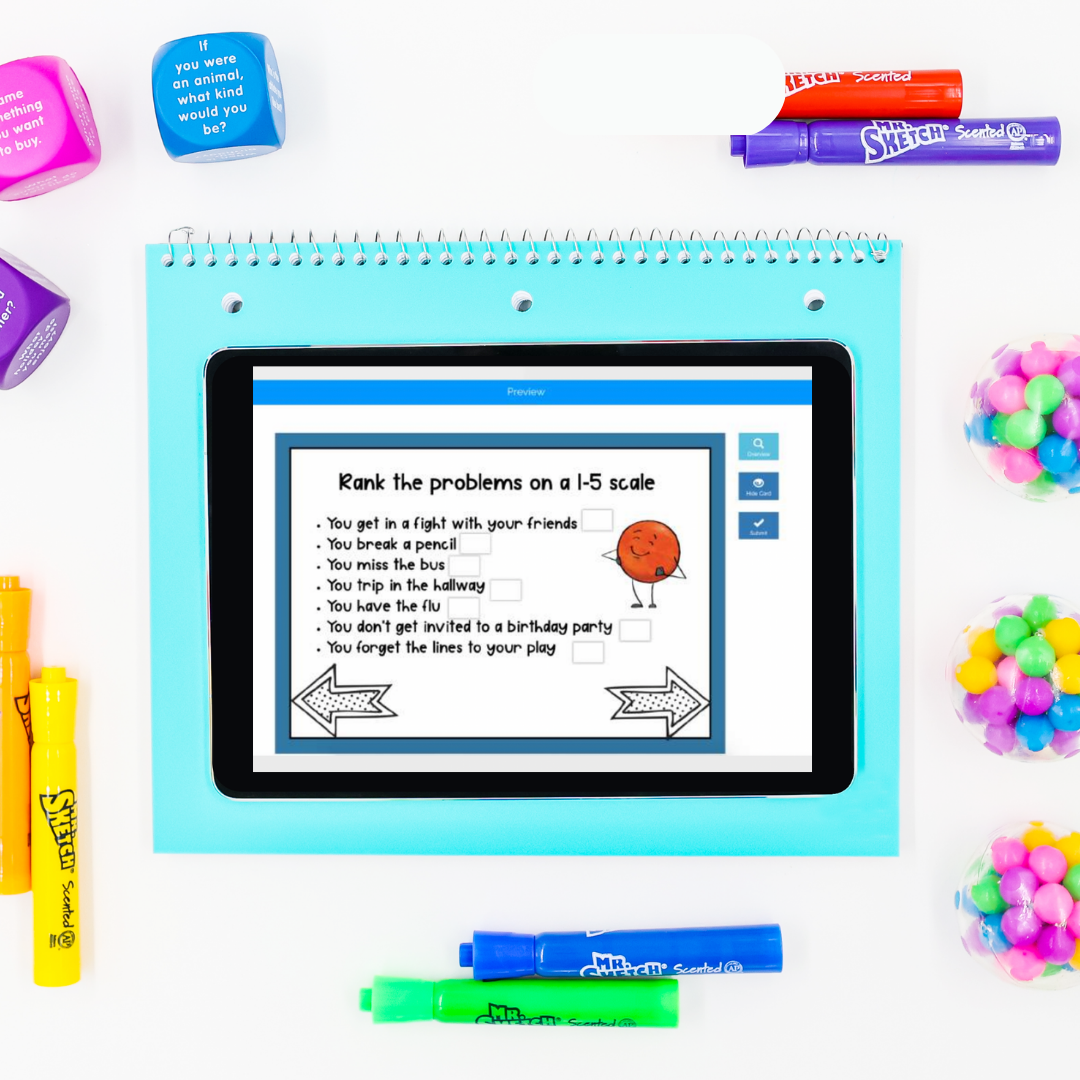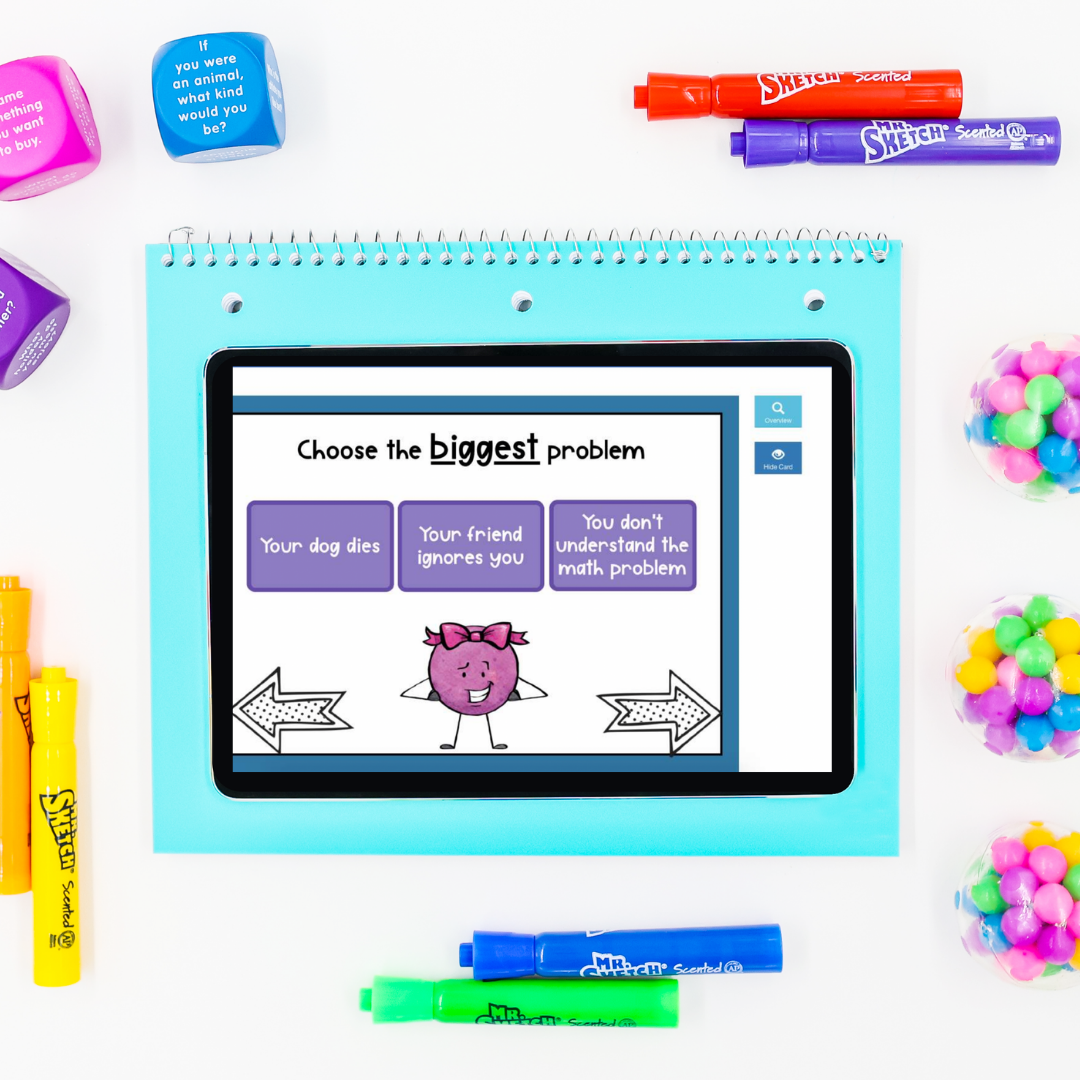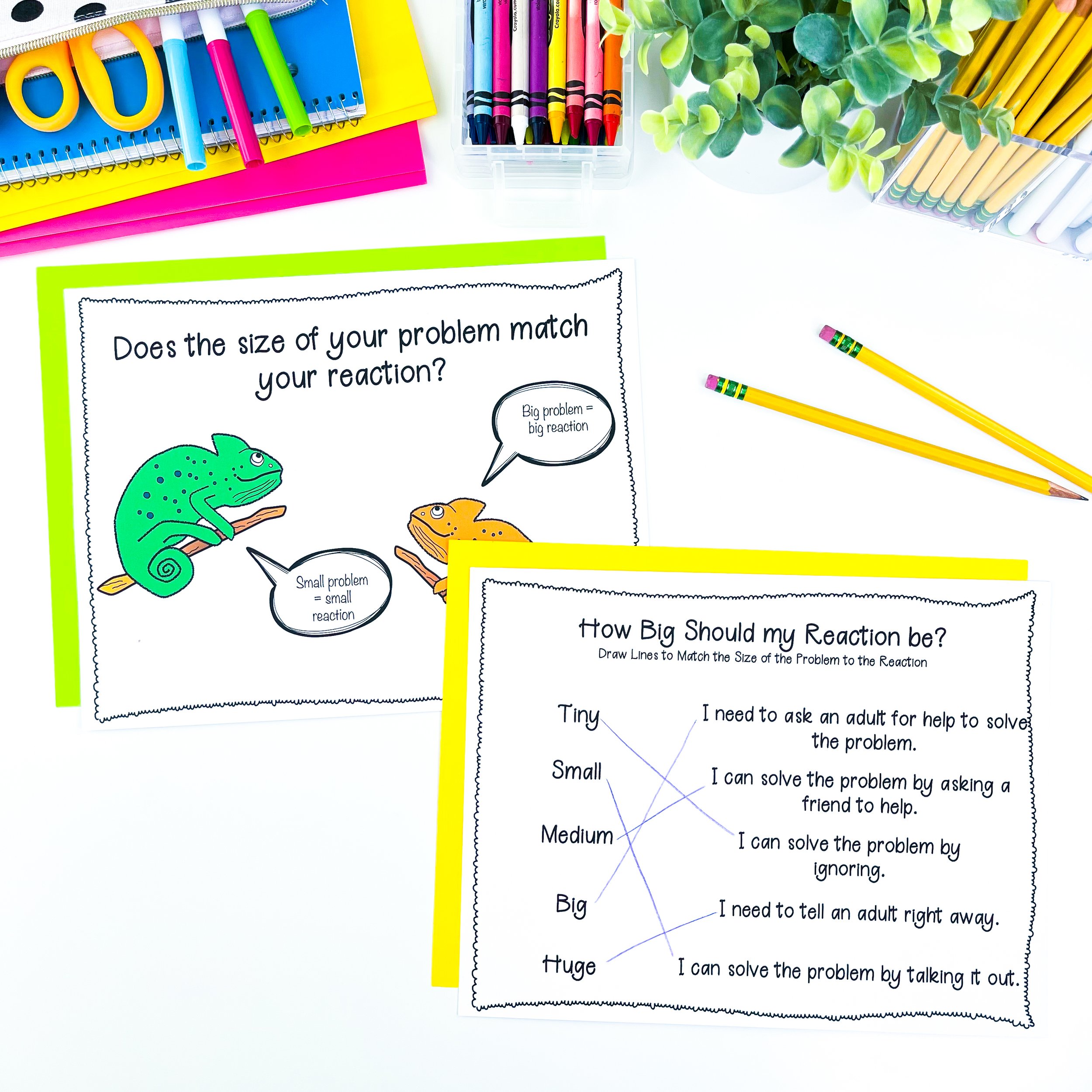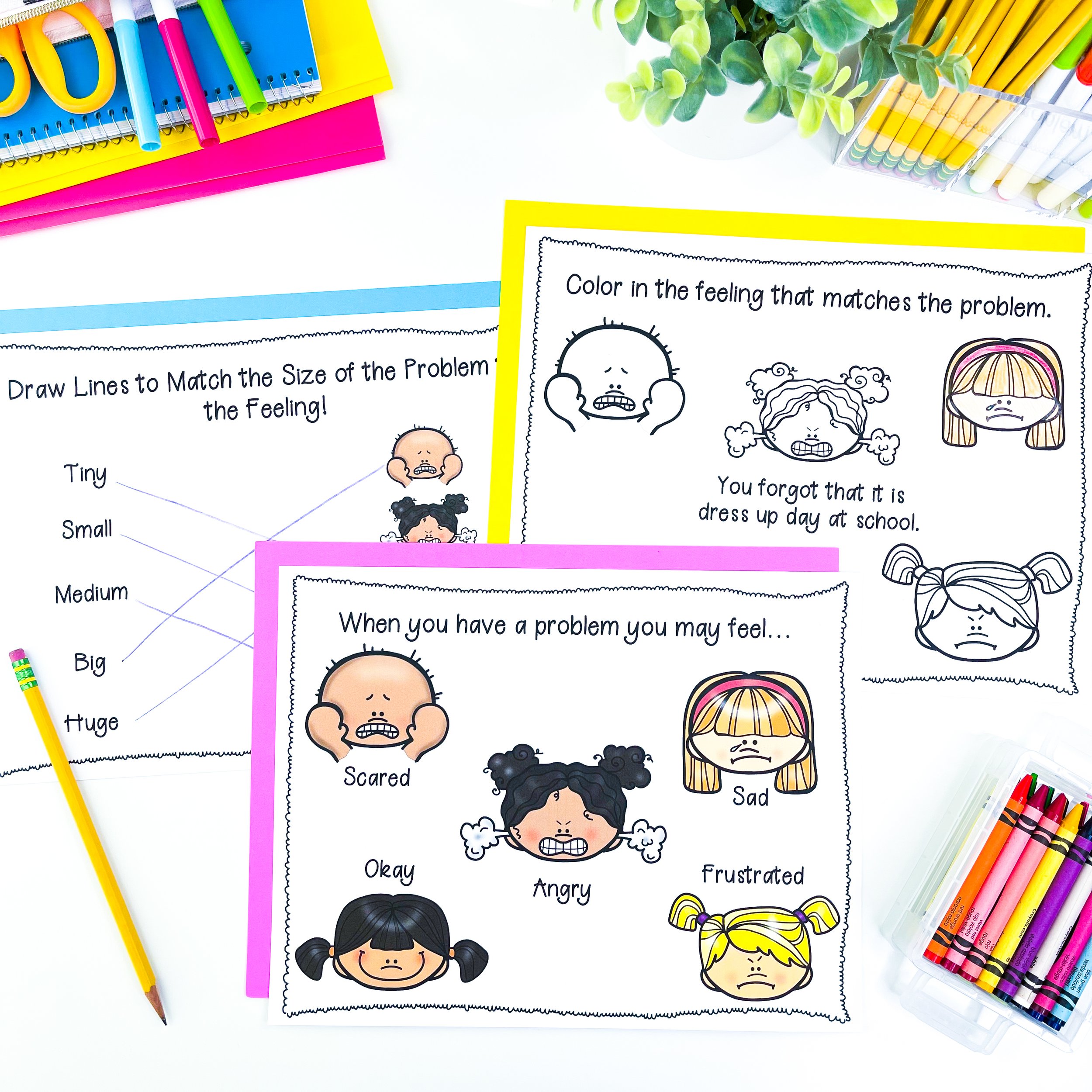4 Ways to Teach Size of the Problem to Elementary Students
Size of the Problem is a social skills concept used to help students identify the severity of their problems which then allows them to choose an appropriate reaction. When students have a common language to describe their problems and reactions, they can identify solutions.
Introducing Size of the Problem at the elementary level is a great way to help students problem solve independently and strengthen social skills. Remember, it is important to consider different learning styles when teaching a new concept. The following 4 teaching methods provide different opportunities for students to identify and practice using Size of the Problem.
1. Videos
Videos are perfect for introducing a new concept to younger students. If you use video clips from films they know and love, they are more likely to maintain interest. I like using this clip from The Incredibles to discuss problem size vs. reaction size. The kids think it is funny and it is a great way to show how the character is completely overreacting. There are a lot of YouTube clips you can use to discuss Size of the Problem. Find one that will interest your students! For some more of my favorite videos to use in counseling check out my YouTube Video Resource Guide here.
2. Games
Games are a student-favorite and always a fun way to teach a concept!
Trashketball
Help students identify the Size of the Problem by playing trashketball and shooting the scenarios into different buckets. You can use 5 buckets (tiny, small, medium, big, huge) or 3 buckets (small, medium, big). Write example problems on strips of paper and have the students wad them up and try to throw them into the corresponding bucket.
Example: Small Problem: You forgot today was dress up day at school. Medium Problem: Your best friend doesn’t want to play with you anymore. Big Problem: Your parents are getting a divorce.
Class-wide Scoot Games and Digital iPad Activities
For something the entire class can do together try a scoot game. Scoot games are super interactive and are a fun way to get kids on their feet and thinking! Check out the one I use here. If you are working with an individual student, try this digital Size of the Problem activity on the iPad.
3. Crafts
Hands-on crafts are great for teaching Size of the Problem in a small group setting.
Collages
You can have students work together to create collages. Use 3 or 5 poster boards (depending on how many size options you want) with the problem size written in the center. Then have students cut out of magazines or newspapers to find pictures and/or words that relate to this problem size. They can also add picture examples of appropriate reactions.
Lap Books
This lap book is another fun craft to make as a group. Students can take the concept and apply it to their everyday lives by writing in their own problems, feelings, reactions, and support system. You can also make a laminated version to re-use with individual students.
4. Worksheets
You can’t beat a classic. Simple worksheets are the best way for some students to retain material when learning a new concept. This activity pack has interactive worksheets with coloring and matching activities. Check it out in my store here.
Do you teach Size of the Problem to your students? Leave a comment below.












